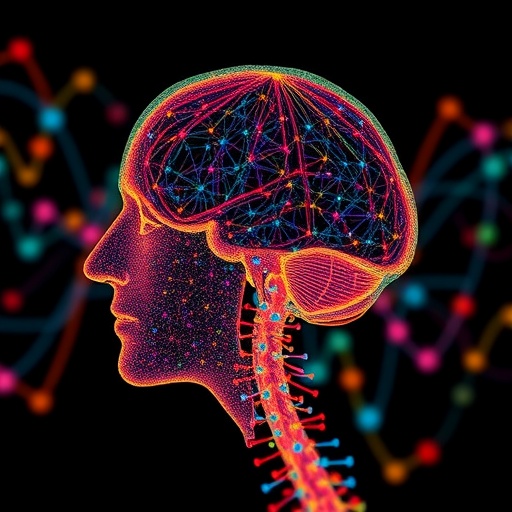
Credit: U.S. Dept. of Energy ARM User Facility
Climate – Ice breaker data
With the conclusion of an unprecedented yearlong expedition to the North Pole called MOSAiC, data from instruments installed on an Arctic ice floe are available to the scientific community to improve models that predict the environmental future of the planet.
Researchers at Oak Ridge National Laboratory were part of an international team that collected a treasure trove of data measuring precipitation, air particles, cloud patterns and the exchange of energy between the atmosphere and the sea ice. The data were captured by a suite of 63 instruments from the Department of Energy’s Atmospheric Radiation Measurement User Facility. ORNL has processed these measurements and made massive amounts of observational data easily accessible and usable for climate modelers.
“We’ve never had this type of data for the northernmost reaches of the Arctic before,” said Giri Prakash, director of the ARM Data Center at ORNL. “These data will be an invaluable resource for scientists to improve predictions of global environmental changes.”
Media Contact: Kim Askey, 865.576.2841, [email protected]
Image: https:/
Caption: Researchers set up ARM instruments on the ice floe near the ship that served as home during the MOSAiC expedition. Credit: U.S. Dept. of Energy ARM User Facility
Image: https:/
Caption: Radiometer instruments collect data on the Arctic ice. Credit: U.S. Dept. of Energy ARM User Facility
Image: https:/
Caption: The icebreaker R/V Polarstern carried more than 60 ARM instruments for the MOSAiC expedition. Credit: U.S. Dept. of Energy ARM User Facility
Biology – Bacterial shield breakdown
An international research team discovered a mechanism that disease-causing bacteria use to anchor their protective outer membranes. Their findings could inform strategies to disrupt a microbe’s cell structure, ultimately helping to combat pathogens that affect humans and plants.
Scientists from Oak Ridge National Laboratory used high-performance computing to create protein models that helped reveal how the outer membrane is tethered to the cell membrane in certain bacteria. These Gram-negative bacteria sandwich their cell walls between an outer and inner membrane, and the layers act as a shield that allows them to persist under harsh conditions.
ORNL’s models informed further simulations and experiments by collaborators who observed these unusual linkages.
“Modeling and simulating membrane proteins help us understand complex cell structures,” ORNL’s Jerry Parks said. “These approaches are particularly important when relatively little is known about an organism, because it is challenging to study in the lab.”
Media Contact: Kim Askey, 865.576.2841, [email protected]
Image: https:/
Caption: ORNL assisted in investigating proteins called porins, one shown in red, which are found in the protective outer membrane of certain disease-causing bacteria and tether the membrane to the cell wall. Credit: Hyea (Sunny) Hwang/Georgia Tech and ORNL, U.S. Dept. of Energy
Batteries – Catching heat
Oak Ridge National Laboratory researchers proved that the heat transport ability of lithium-ion battery cathodes is much lower than previously determined, a finding that could help explain barriers to increasing energy storage capacity and boosting performance.
Research on lithium-ion batteries, which are used primarily in smart phones and laptops, has shown that lower heat transport is hampered, which leads to less energy density and poorer performance.
In the study, researchers used quantum mechanical calculations to predict the inherent heat transport capabilities of battery cathodes and the impacts of charging. Further evaluation looked at how strong vibrational forces among ions between the material’s layers can influence heat.
“We found heat transport to be more inefficient than thought due to the non-harmonic vibrational forces among ions, worsening during charging,” ORNL’s Tianli Feng said. “Our results resolve long-standing issues regarding heat transport and provide guidance for how future high-density batteries can be designed.”
Media Contact: Jennifer Burke, 865.414.6835, [email protected]
Image: https:/
Caption: ORNL researchers determined lower heat exchange in lithium-ion batteries is caused by the strong non-harmonic forces among ions and weak interaction between layers, providing guidance for high-density battery design. Credit: Tianli Feng/ORNL, U.S. Dept. of Energy
Neutrons – Finding order in disorder
Researchers have revealed a new understanding of disordered ceramics – materials with nonuniform atomic arrangements used in a variety of energy-related applications including electronics, nuclear fuels and fuel cells.
Pauling’s Rules is the standard model used to describe atomic arrangements in ordered materials. Neutron scattering experiments at Oak Ridge National Laboratory confirmed this approach can also be used to describe highly disordered materials.
Researchers demonstrated the model’s ability to determine the distance between neighboring atoms and predict how the atoms move once disorder is introduced. The new knowledge overturns conventional wisdom that ions in disordered materials are mixed randomly, but instead arrange themselves in building blocks with a high degree of order.
“Disorder is the basis for many interesting properties and applications,” said Maik Lang of the University of Tennessee and corresponding author of the Science Advances study. “A better understanding of how these materials behave could lead to realizing improved materials with more functionality.”
Media Contact: Jeremy Rumsey, 865. 576.2038, [email protected]
Image: https:/
Caption: UTK researchers used neutron probes at ORNL to confirm established fundamental chemical rules can also help understand and predict atomic movements and distortions in materials when disorder is introduced, as arrows show. Credit: Eric O’Quinn/UTK
###
Media Contact
Sara Shoemaker
[email protected]
Related Journal Article
http://dx.





